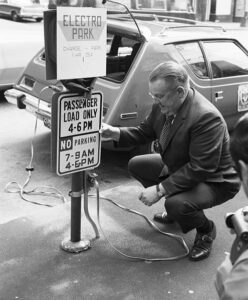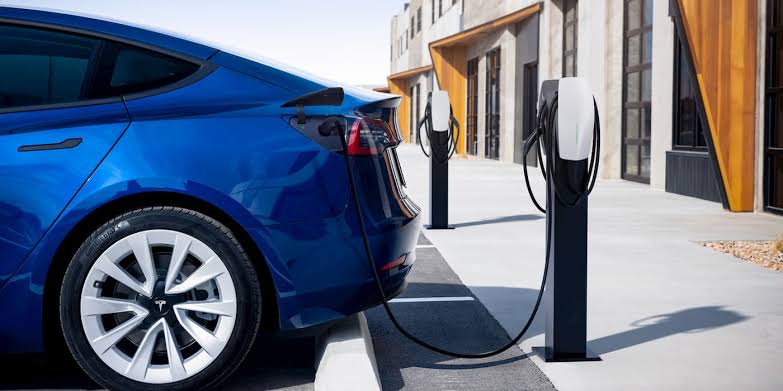Electric vehicles (EV) have been a revolutionary invention that has significantly impacted the automotive industry, and the entire world, for the better.
With increased concern for climate change and global warming, more people are looking for alternative and eco-friendly methods of transportation.
EV’s have become a popular alternative for those seeking to reduce their carbon footprint while still enjoying the convenience of personal transportation.
In this article, we will explore the origins and history of electric vehicles and how the technology has transformed over time.
Additionally, we will examine the pros and cons of early electric vehicles, introduce their modern-day counterparts, and take a look at future developments in this rapidly growing industry.
Origins of Electric Vehicles
The earliest prototypes of EV date back to the 1830s.
Scottish inventor Robert Anderson invented the first electric car in 1832, which was powered by non-rechargeable cells.

However, in the late 1800s and early 1900s, EV became more common as battery and motor technology improved.
In 1897, the first electric taxi hit the streets of London, quickly followed by New York in 1899.
These electric taxis were popular in the big cities for a time due to the ease of use, cheaper to operate, and quieter compared to their gasoline-powered counterparts.
This was a turning point in the history of EV.
Advantages and Disadvantages of Early EV
Early electric vehicles had a lot of advantages, especially when it came to emissions and noise pollution.
They had fewer moving parts resulting in fewer maintenance expenses, and were easier to operate compared to gas-powered vehicles.
Additionally, EV were cheaper to “refuel” as electricity was less expensive than gasoline.
However, the major disadvantage was their limited range, averaging around 50 miles on a full charge.
This meant that long-distance travel with electric vehicles was out of the question.
Longer charging times were also an issue, and charging was only possible when there was access to an electricity source.
The cost of producing EV was also much higher than their gasoline-powered counterparts as battery technology was still in its infancy.
With the invention of the internal combustion engine, gasoline-powered vehicles soon became more popular than electric vehicles.
Reemergence of Electric Vehicles in the 21st Century
As the world became increasingly aware of climate change and its effect on the environment, people began to demand cleaner, more sustainable transportation.
Governments across the globe started promoting the use of EV through incentives and regulations.
This, coupled with advancements in battery technology, led to the reemergence of electric vehicles.
Electric vehicles became more popular than ever before, especially in urban areas where the combination of low emissions and low noise was highly desirable.
Battery technology also improved significantly, reducing the charging time and increasing the range of electric vehicles.
This made EV more feasible for long-distance travel.
Modern Electric Vehicles
Modern electric vehicles come in various shapes and sizes and include everything from hybrid cars to fully electric vehicles.
Hybrid vehicles operate with an electric motor when driving at low speeds, and then switch to gasoline when driving faster.
This innovation has helped overcome the disadvantage of limited range experienced by early electric vehicles.
Fully electric vehicles, on the other hand, offer a range up to several hundred miles on a single charge.
They run entirely on electricity, making them an eco-friendly and sustainable alternative to traditional gasoline-powered vehicles.
Advances in battery technology have made electric vehicles more accessible and affordable for everyday use.
Additionally, charging infrastructure has improved significantly, with more charging stations being built every day across the globe.
For instance, Teslas has set up its dedicated Supercharger network that is increasing well in all significant cities worldwide.
Future Developments in Electric Vehicle Technology
As battery technology advances and charging times decrease, EV continue to show tremendous potential.
The future of EV technology holds many exciting developments.
For example, the development of wireless charging and portable charging options, making it possible to charge on the go, is currently being explored.
The adoption of renewable power sources through an EV charging station is essential for the growth and shaping of sustainable transportation solutions.
This could provide a significant reduction in carbon emissions and contribute considerably to reversing the effects of global warming.
Moreover, the introduction of autonomous driving could revolutionize the automotive industry.
With EV technology at its heart, the advent of autonomous vehicles could significantly reduce the cost of transportation while providing a reliable and sustainable form of transportation.
The future is bright, and the electric vehicle industry is only going to continue to grow and innovate.
Technological advancements are continuously pushing boundaries and expanding our horizons of what is possible.
Final Words on Electric Vehicle
EV technology has come a long way since its origin in the 1830s.
From the early days of invention and limited usage due to the battery and motor technology, it has come to a place where it is a sustainable and eco-friendly alternative to traditional gasoline-powered cars.
We earlier discussed how blue light can have significant negative impacts on our health and that blue light filters are essential to mitigate those risks.









1 comment